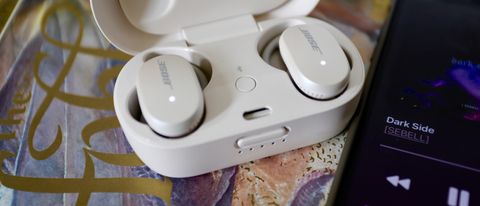


With ✻etter Ears« you can keep your Mac and your iOS devices in sync. Put yourself in "Training Camp" to learn church modes, or concentrate on those two pesky intervals that constantly cause you problems. ✻etter Ears« ships with four preset levels:Īdditionally you can create your own levels, letting you train to your own specific needs. Simply play the individual tones on your instrument or sing them when the microphone button lights red. The integrated pitch detection allows you to answer the questions with your voice or a real instrument (e.g. You can key notes on either.Īnswer with your vocals or with a real instrument ✻etter Ears« comes with a virtual keyboard and virtual guitar fretboard. With the help of SoundFonts (.sf2) you have the possibility to extend Better Ears with your own sounds. Better Ears comes with Acoustic Grand piano, Bright Acoustic Piano, Electric Grand Piano, Drawbar Organ, Nylon Acoustic Guitar and Steel Acoustic Guitar. The new editor for Chords, Scales and Chord Progressions allows you to add your own items.Ĭhoose your training sound out of six different instruments. ✻etter Ears« includes 13 different exercises:Ĭustom chords, scales and chord progressions There are no rules you have to follow, you decide when to start and how often to practice. With ✻etter Ears« you can decide for yourself what your training routine should look like. There are 13 different exercises included, starting from interval recognition all the way down to chord progressions - perfect for beginners and music-masters alike! I called it quits because there is no way that this scanning at 12 inches away of my ear, not really my ear canal, is going to be as correct/accurate as the Audiogram data I already have.✻etter Ears« is an educational Music Theory and Ear Training app, which helps you grow your musical skills and enhance your hearing capabilities. Additionally I have to override my already loaded Audiogram data to get this to work. From what I was able to gather at this point it only works if you have Apple Music. Finally done I progress to the demonstration part and I hit a dead end. After another dozen attempts I finally got one ear scanned. Getting the phone camera in the exact correct position was difficult at best. I had to set up multiple mirrors to be able to see where the phone was in relation to my head directly to the side. As I had no help, after a half dozen attempts it kept failing. I suggest having someone to help you with this part. You can’t see what you’re doing and it’s not ergonomically simple. By holding the phone 8-12 inches out and directly facing your ear.
#Better ears for ios full#
You have to do a full front face/head scan 1st, that was easy enough. Once I did figure that out the instructions/directions were vague. First off it was difficult to just find the option to get it started.

As best I recall the Mimi app was free, but I think you have to create an account. Some of these Hearing Apps will try to get you to buy a membership or pay some fee or register.
#Better ears for ios free#
This one is free and does allow you to do a full hearing test for each ear using headphones you already own. There are other such apps so pick one that works best for you. I used the Mimi Hearing Test App (linked below). It was pretty simple and straightforward process. There are several ways to get an Audiogram done. It will result in a far more accurate audio curve suited to your hearing capabilities. Imho, just do/get an Audiogram and load that data into the phone. Figuring if you were able to physically complete the scanning process you will feel invested enough to join Apple Music to be able to use and test the results.

My final impressions were that this is an Apple Music Promotion thing. I called it quits because there is no way that this scanning at 12 inches away of my ear, not really my ear canal, is going to be as correct/accurate as the Audiogram data I already have. Click to expand.Think you pretty much nailed it.


 0 kommentar(er)
0 kommentar(er)
